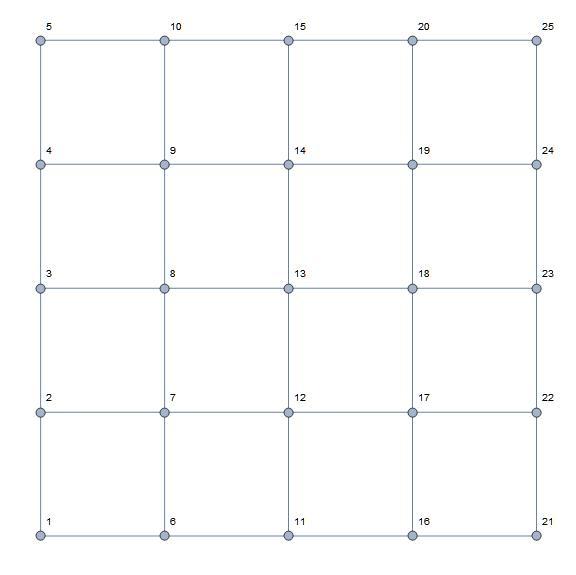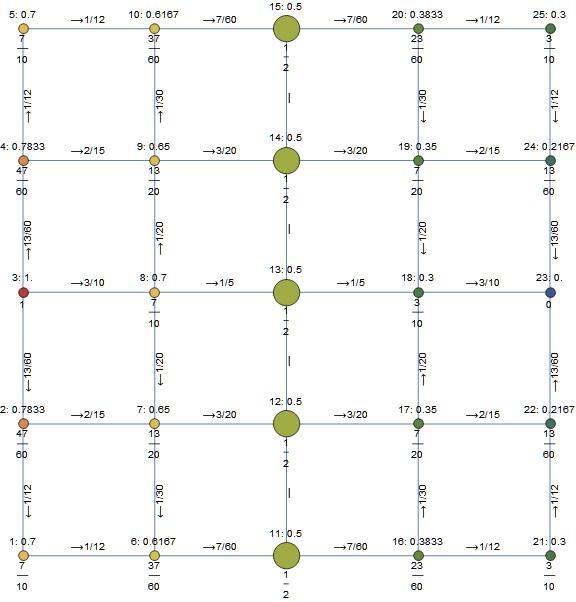Easier 5x5 lattice resistor problem. What is product of most common voltage & number of such nodes?

All resistors are . Input node is #3 at 1V. Output node is #23 at 0V (grounded).
This variant of the 5x5 resistor lattice problem is very much easier. It can be answered without doing any computation if you consider well the symmetries of the lattice.
Determine the most common node voltage relative to ground and the number of nodes at that voltage.
The answer is the product of that voltage and the number of such nodes. What is the answer ?
The answer is 2.5.
This section requires Javascript.
You are seeing this because something didn't load right. We suggest you, (a) try
refreshing the page, (b) enabling javascript if it is disabled on your browser and,
finally, (c)
loading the
non-javascript version of this page
. We're sorry about the hassle.

Node voltages are shown below. There are five nodes at half a volt, so the answer is 2.5